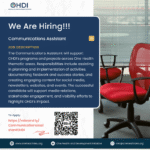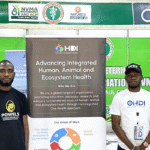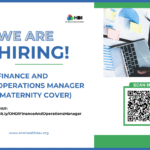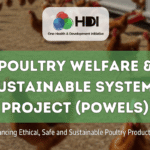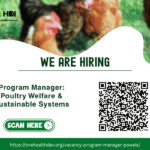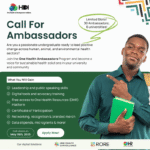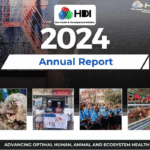
Introduction
The world recorded a massive victory in 1928 when Scottish scientist Sir Alexander Fleming accidentally discovered penicillin, the world’s first antibiotic. Penicillin discovery opened a new vista in humanity’s age-long fight against germs. Since then, we have developed an exotic array of antibiotics, ranging from those that target bacterial cell walls to the ones that interrupt bacteria DNA replication. Beyond antibiotics, we developed antivirals against viruses, antifungals against fungi, and antiprotozoals against protozoa. These antimicrobials combined make infections less deadly, surgeries and transplants safer, and improved health and quality of life worldwide.
Unfortunately, less than a century after Fleming’s discovery, antimicrobial resistance (AMR), a phenomenon where “bacteria, viruses, fungi, and parasites no longer respond to antimicrobial medicines” (World Health Organization, 2023), has emerged to become a public health crisis. Persistent overuse, inappropriate prescription, and extensive use of antimicrobials in agriculture have potentiated resistance among microorganisms (Ventola, 2015), giving rise to multidrug-resistant bacteria, otherwise called superbugs. These superbugs contributed to about 4.95 million deaths in 2019 (Antimicrobial Resistance Collaborators, 2022), while death and disability due to AMR resulting from their menace are estimated to cost one trillion US dollars in extra healthcare charges by 2050 (Jonas et al., 2017). This essay looks at innovative solutions for AMR through the lens of a medical student in Nigeria. It starts by highlighting Nigeria’s AMR status.
Antimicrobial Resistance in Nigeria
Nigeria cannot afford AMR. The country has a high burden of infectious diseases, such as malaria, tuberculosis, and HIV/AIDS. A joint report by the federal ministries of agriculture, environment, and health (Federal Ministries of Agriculture, Environment, and Health, 2017)
paints this reality in ominous terms. Nigeria, the country with the second highest number of people with HIV/AIDS, accounts for 9% of the global burden of the disease. Nigeria is one of the six countries that account for more than 60% of malaria cases worldwide, one of the 27 with a high burden of multidrug-resistant tuberculosis (MDR-TB).
In addition to these burdens, Nigerians are ravaged by an army of enteric pathogens, typhoidal and non-typhoidal Salmonella typhi, as well as a cocktail of microbes causing urinary tract infections, bloodstream infections, healthcare-associated infections, meningitis, and pneumonia. Each group of pathogens and infections demonstrates worrying levels of AMR (Federal Ministries of Agriculture, Environment, and Health, 2017). Escherichia coli, for instance, has demonstrated up to 100% resistance across multiple studies in Nigeria. Staphylococcus aureus showed a high level of resistance to chloramphenicol and quinolones. Similar resistance patterns were found in Gram-negative bacilli recovered in Oyo, among others.
Despite the burden of AMR in Nigeria, stakeholders have been slow to respond to the problem. Antibiotic use in Nigerian hospitals is among the highest in the world (Abubakar, 2020). Over- the-counter, non-prescription sale of antibiotics is still on. However, these are recent phenomena. In 1997, researchers at the University of Lagos highlighted the challenge of AMR in Nigeria, citing over-the-counter access to antibiotics and the availability of substandard antibiotics as driving factors (Ogunsola et al., 1997). It took 20 years before the country developed a 5-year national action plan in 2017. The goals of the action plan remain to be realized.
Innovative Solutions
The need for innovative solutions has never been more pressing. With the emergence and re- emergence of old and new infectious diseases that threaten global health systems, we need new diagnostic tools to track bacterial evolution in the ecosystem and detect resistance on time; new protocols to improve antimicrobial stewardship across all levels of antimicrobial use, and the discovery of new antimicrobials and alternative therapies to reignite the dying embers of antimicrobial therapy, and improve patient outcomes. In this section, I highlight innovations from my medical training that could reduce AMR burden in Nigeria.
1. Antibiotics Prescription Checklist
What would happen if physicians had a checklist for safe antimicrobial prescription? In 2009, an Indian-American surgeon Atul Gawande and his colleagues introduced a surgical safety checklist to guide surgical procedures and improve patient outcomes (Haynes et al., 2009). The team developed a 19-item checklist that covered critical intervention points in surgery: before induction of anaesthesia, before skin incision, and before the patient leaves the operating room.
They applied the checklist in eight hospitals across Africa, Asia, Middle East, Europe, and North America, covering about 4,000 patients. The outcome of intervention was significant: the checklists reduced mortality by half, from 1.5% to 0.8%, while inpatient complications went from 11% at baseline to 7% post intervention. The surgical safety checklist had worked—patient came out of surgery with lesser complications and lesser deaths.
Clinical use of antimicrobials is no surgery, but, like surgery, it represents a significant intervention in patient care. About 75% of hospitalized patients in Nigeria use antibiotics (Abubakar, 2020). Such level of antibiotic use can potentiate resistance in pathogens and undermine patient safety. The lessons from the surgical safety checklist could therefore be applied to develop a checklist for safe antimicrobial prescription. Such a checklist would include variables covering prescription and withdrawal, like patient’s biodata, clinical information,
suspected microbe or group of microbes, local antimicrobial sensitivity pattern of the microbe, panel of antimicrobial and non-antimicrobial medications, effective doses of the medications, their effective duration, and so on.
The checklist can be designed into a board and hanged in consulting rooms, made into a handy A4-sheet, or a simple mobile application to guide the clinician on the go. The checklist will simplify antimicrobial stewardship for clinicians, and drive a more rational prescription–and ultimately, use–of antimicrobials. It would enable clinicians to be patently aware of why, when, and how to use antimicrobials. This way, antimicrobial use would not a product of habitual prescription or antimicrobial dogma, but a conscious, checklist-guided decision-making process.
2. Enhanced Antimicrobial Withdrawal After Therapy (ENAWAT) Protocol
Before concluding his Nobel Lecture in 1945, Sir Alexander Fleming had one final piece of advice for penicillin users: ―if you use penicillin, use enough‖ (Fleming, 1947, p.93). Following his advice, physicians sought to deliver the effective antimicrobial dose that would eliminate pathogens and resolve the infections they cause. The challenge, however, was knowing how much is enough. In vitro studies can tell the minimal inhibitory concentrations, the minimum dose that inhibits bacterial growth, but getting that concentration and maintaining it in human patients is not as straightforward. Clinicians therefore prescribe antibiotics in courses, usually for five, seven, 10 or 14 days (Langford and Morris, 2017).
However, several studies have shown that shorter courses are not less effective than long courses, and early discontinuation of antibiotics does not lead to resistance (Langford and Morris, 2017). Instead, evidence suggests the opposite: that prolonged courses of antibiotics contribute to microbial resistance. A systematic review of antibiotic use in primary care settings shows that the longer the antibiotics course, the greater the risk of isolating resistant bacteria from patients (Costelloe et al., 2010).
Based on this, a rethinking of antimicrobial use could be helpful. That is where my proposed enhanced antimicrobial withdrawal after therapy (ENAWAT) protocol comes in. ENAWAT borrows from the enhanced recovery after surgery (ERAS) protocol that Henrik Kehlet introduced in 1997 (Kehlet, 1997). Surgeons adopt ERAS protocol to optimize a patient’s physiological and psychological responses to surgery (Melnyk et al., 2011). ENAWAT, on the other hand, seeks to reduce antibiotics course by optimizing and supporting the patient’s immunity to infections such that they can survive without antibiotics.
The ENAWAT protocol comprises of pre-therapy counselling on hygiene, optimization of nutrition, conservative pain and fever management, and early antibiotic withdrawal. Before therapy, the patient is counselled on hand-wash, basic sanitation and nutrition, factors that could worsen their infections (Freeman et al., 2017) and prolong antibiotics use. Then, a nutritionist or dietician steps in to prescription recovery-supporting meals. A clinician can do this in the absence of a specialist.
Fever and pain are often managed with analgesics; in the ENAWAT protocol, fever is managed conservatively. Fever is an adaptive response to injuries and infections, and it has been shown to increase survival rates in patients with sepsis (Rumbus et al., 2017). A drastic reduction in fever is, therefore, avoided by careful withholding of fever-reducing medications. Finally, antibiotics are withdrawn as soon as the patient is clinically stable – able to sit up, walk, talk, and carry out daily activities on their own.
Like the ERAS protocol in surgery, the ENAWAT protocol could moderate antibiotics use in therapy and reduce antibiotics resistance. It prioritizes and optimizes the innate human capacity to fight bacterial pathogens, and ensures a rational, evidence-based use of antibiotics.
Conclusion
AMR is a menace that threatens us all. From humans to animals, animals to the environment, AMR creates a vicious cycle of disease and failed therapy that undermines our productivity and safety. But we are not helpless. By looking inwards to find innovative solutions, like antibiotics prescription checklist and ENAWAT highlighted here, we can turn the tide against AMR and restore the glorious days of victory against life-threatening infections. We can win.
References
Abubakar U. (2020). Antibiotic use among hospitalized patients in northern Nigeria: a multicenter point-prevalence survey. BMC infectious diseases, 20(1), 86. https://doi.org/10.1186/s12879-020-4815-4
Antimicrobial Resistance Collaborators (2022). Global burden of bacterial antimicrobial resistance in 2019: a systematic analysis. Lancet (London, England), 399(10325), 629– 655. https://doi.org/10.1016/S0140-6736(21)02724-0
Costelloe, C., Metcalfe, C., Lovering, A., Mant, D., & Hay, A. D. (2010). Effect of antibiotic prescribing in primary care on antimicrobial resistance in individual patients: systematic review and meta-analysis. BMJ (Clinical research ed.), 340, c2096. https://doi.org/10.1136/bmj.c2096
Federal Ministries of Agriculture, Environment and Health (2017). Antimicrobial use and resistance in Nigeria: situation analysis and recommendations.
Fleming, Sir Alexander (1945). Nobel Lecture. NobelPrize.org. Nobel Prize Outreach AB 2023, 83–93. Retrieved from: https://www.nobelprize.org/prizes/medicine/1945/fleming/lecture/ (Accessed: November 30, 2023).
Freeman, M. C., Garn, J. V., Sclar, G. D., Boisson, S., Medlicott, K., Alexander, K. T., Penakalapati, G., Anderson, D., Mahtani, A. G., Grimes, J. E. T., Rehfuess, E. A., & Clasen, T. F. (2017). The impact of sanitation on infectious disease and nutritional status:
A systematic review and meta-analysis. International journal of hygiene and environmental health, 220(6), 928–949. https://doi.org/10.1016/j.ijheh.2017.05.007
Haynes, A. B., Weiser, T. G., Berry, W. R., Lipsitz, S. R., Breizat, A. H. S., Dellinger, E. P., … & Gawande, A. A. (2009). A surgical safety checklist to reduce morbidity and mortality in a global population. New England journal of medicine, 360(5), 491-499. https://doi.org/10.1056/NEJMsa0810119
Jonas, O. B., Irwin, A., Berthe, F. C. J., Le Gall, F. G., & Marquez, P. V. (2017). Drug-resistant infections: a threat to our economic future (Vol. 2): final report. HNP/Agriculture Global Antimicrobial Resistance Initiative. World Bank Group. Retrieved from: http://documents1.worldbank.org/curated/en/323311493396993758/pdf/final-report.pdf (Accessed: November 30, 2023).
Kehlet H. (1997). Multimodal approach to control postoperative pathophysiology and rehabilitation. British journal of anaesthesia, 78(5), 606–617. https://doi.org/10.1093/bja/78.5.606
Langford, B. J., & Morris, A. M. (2017). Is it time to stop counselling patients to “finish the course of antibiotics”?. Canadian pharmacists journal : CPJ = Revue des pharmaciens du Canada : RPC, 150(6), 349–350. https://doi.org/10.1177/1715163517735549
Melnyk, M., Casey, R. G., Black, P., & Koupparis, A. J. (2011). Enhanced recovery after surgery (ERAS) protocols: Time to change practice?. Canadian Urological Association journal = Journal de l’Association des urologues du Canada, 5(5), 342–348. https://doi.org/10.5489/cuaj.11002
Ogunsola, F. T., Kesah, C. N., & Odugbemi, T. (1997). Antimicrobial resistance in Nigeria: an overview.
Rumbus, Z., Matics, R., Hegyi, P., Zsiboras, C., Szabo, I., Illes, A., Petervari, E., Balasko, M., Marta, K., Miko, A., Parniczky, A., Tenk, J., Rostas, I., Solymar, M., & Garami, A. (2017). Fever Is Associated with Reduced Hypothermia with Increased Mortality in Septic Patients: A Meta-Analysis of Clinical Trials. PloS one, 12(1), e0170152. https://doi.org/10.1371/journal.pone.0170152
Ventola C. L. (2015). The antibiotic resistance crisis: part 1: causes and threats. P & T : a peer- reviewed journal for formulary management, 40(4), 277–283.
World Health Organization (WHO), (November 21, 2023). Antimicrobial resistance. Retrieved from: https://www.who.int/news-room/fact-sheets/detail/antimicrobial-resistance. (Accessed: November 30, 2023).


